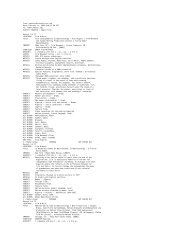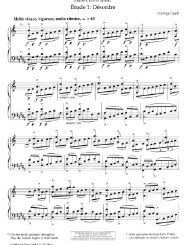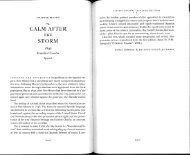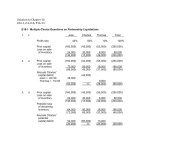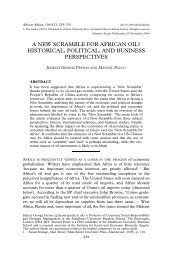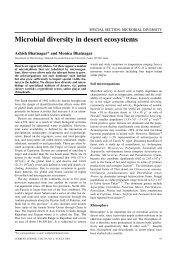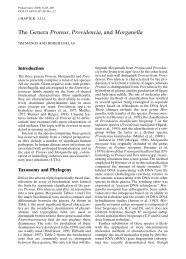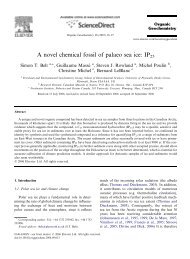Analysis by Key: Another Look at Modulation
Analysis by Key: Another Look at Modulation
Analysis by Key: Another Look at Modulation
Create successful ePaper yourself
Turn your PDF publications into a flip-book with our unique Google optimized e-Paper software.
CARL SCHACHTER<br />
ANALYSIS BY KEY: ANOTHER LOOK AT<br />
MODULATION<br />
Except for the point, the still point,<br />
There would be no dance<br />
(T. S. Eliot)<br />
Until fairly recently, most musicians thought of Heinrich Schenker (if they<br />
thought of him <strong>at</strong> all) as the theorist who reduced whole pieces to three notes and<br />
denied th<strong>at</strong> they modul<strong>at</strong>ed to different keys. Nowadays anyone familiar with<br />
music theory knows th<strong>at</strong> Schenker did more than analyse the first movement of<br />
the Eroica as 'Three Blind Mice' with a college educ<strong>at</strong>ion. But many still believe<br />
th<strong>at</strong> he rejected outright the concept of key change, and indeed there is more<br />
justific<strong>at</strong>ion for this misconception than for the other. Schenker was, to say the<br />
least, highly critical of the way the concept had been generally formul<strong>at</strong>ed and<br />
applied, and his own theory gre<strong>at</strong>ly reduces its scope. Near the beginning of<br />
Free Composition, for example, he writes as follows:<br />
But the most baneful error of conventional theory is its recourse to 'keys'<br />
when, in its lack of acquaintance with background and middleground, it<br />
finds no other means of explan<strong>at</strong>ion. Often its helplessness is so gre<strong>at</strong> th<strong>at</strong> it<br />
abandons even this most comfortable means of avoiding difficulties.<br />
Nothing is as indic<strong>at</strong>ive of the st<strong>at</strong>e of theory and analysis as this absurd<br />
abundance of 'keys'. The concept of the 'key' as a higher unity in the<br />
foreground is completely foreign to theory: it is even capable of design<strong>at</strong>ing<br />
a single unprolonged chord as a key. 1<br />
Although Schenker thus acknowledged th<strong>at</strong> keys might appear as 'higher<br />
unities in the foreground', his own work - especially in its l<strong>at</strong>er phases - sheds<br />
little light on the compositional role of such higher unities; nor have l<strong>at</strong>er<br />
Schenkerians concerned themselves very much with this question. The time is<br />
perhaps ripe for theorists and other musicians to take another look <strong>at</strong> the notion<br />
MUSIC ANALYSIS 6:3, 1987 289



